
6 Hidden Ways Flooding Can Start in Your Chicagoland Home — And How to Stop It Fast

Nasutsa Mabwa
October 7, 2025Even if your Chicagoland home isn’t near a river or floodplain, hidden sources of water damage can still put your property at risk. From heavy rain and sewer backups to appliance leaks and burst pipes, flooding can start quietly and spread fast. In this practical homeowner’s guide, ServiceMaster Restoration By Simons CEO Nasutsa Mabwa explains six overlooked causes of flooding—and how to prevent them before they lead to costly repairs.
When most Chicagoland homeowners think about flooding, they picture swollen rivers or overflowing lakes. But the truth is, the most common causes of home flooding happen quietly—inside basements, behind walls, and beneath floors—often without a single weather alert.
Whether you live in Chicago’s North Side, Wilmette, Oak Park, or Lake Forest, your home faces year-round water intrusion risks from storms, sewer backups, and infrastructure fatigue. Even one inch of water can cause more than $25,000 in damage, according to FEMA, making early prevention and fast mitigation essential.
At ServiceMaster Restoration By Simons, we’ve spent more than 40 years helping homeowners recover from unexpected water damage. Below, I’ll share six often-overlooked ways flooding can start in your Chicagoland home—and how you can stop each one before it leads to costly repairs or mold growth.
1. Heavy Rain and Poor Drainage
Heavy rain flooding in Chicago, North Shore basement flooding repair, stormwater backup Chicago
Chicagoland’s combined sewer systems and frequent heavy rains create the perfect conditions for basement flooding—even in neighborhoods far from rivers. When rainfall overwhelms storm drains or your gutters and downspouts can’t keep up, water can backflow toward your foundation or seep through window wells and cracks.
Prevention tips:
- Keep gutters and downspouts clean, and extend them at least 6 feet from your foundation.
- Grade your yard to slope away from the house.
- Install window well covers and check them seasonally for leaks.
- Add a backwater valve if your home connects to a municipal sewer line.
Pro Insight: In older Chicago homes, clay sewer laterals often collapse or clog after years of ground movement. A quick camera inspection can prevent a full-scale basement flood later.
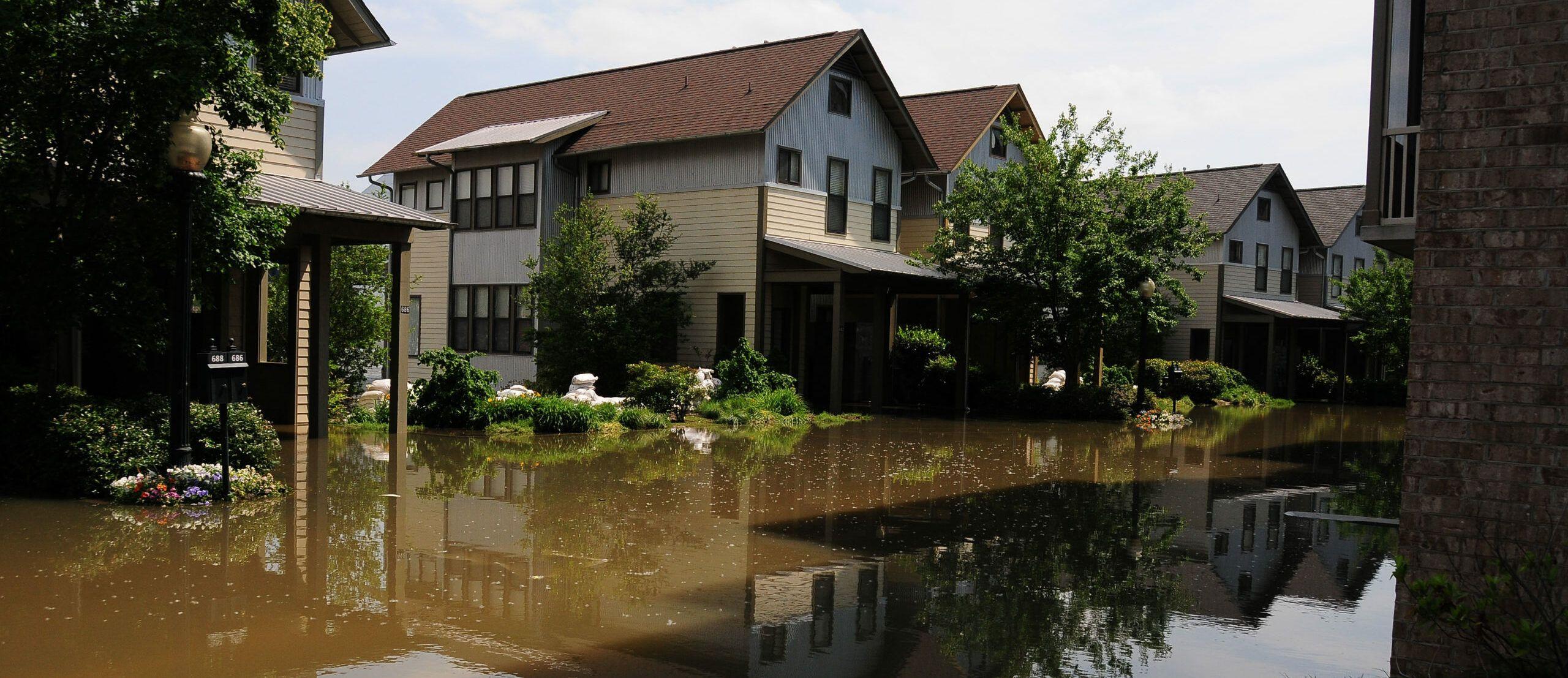
2. Sewer Backups and Plumbing Failures
Sewer backup flooding in Chicago homes, sump pump failure flooding repair, drain backup cleanup Chicago
When wastewater or stormwater pushes back into your home’s drains, it’s not just a mess—it’s a health hazard. Sewage flooding contains bacteria, viruses, and chemicals that require professional cleaning and disinfection.
Common causes:
- Tree root intrusion in old sewer lines
- Clogged or undersized sump pumps
- Overloaded combined sewers after storms
- Grease or non-flushable waste buildup
Prevention tips:
- Never pour grease or oil down the drain.
- Have your sewer line inspected every few years.
- Install a secondary sump pump or battery backup.
If your basement floods with sewage, do not attempt to clean it yourself. Professional restoration teams like ours use PPE, negative-air containment, and IICRC-approved antimicrobial treatments to ensure complete decontamination.
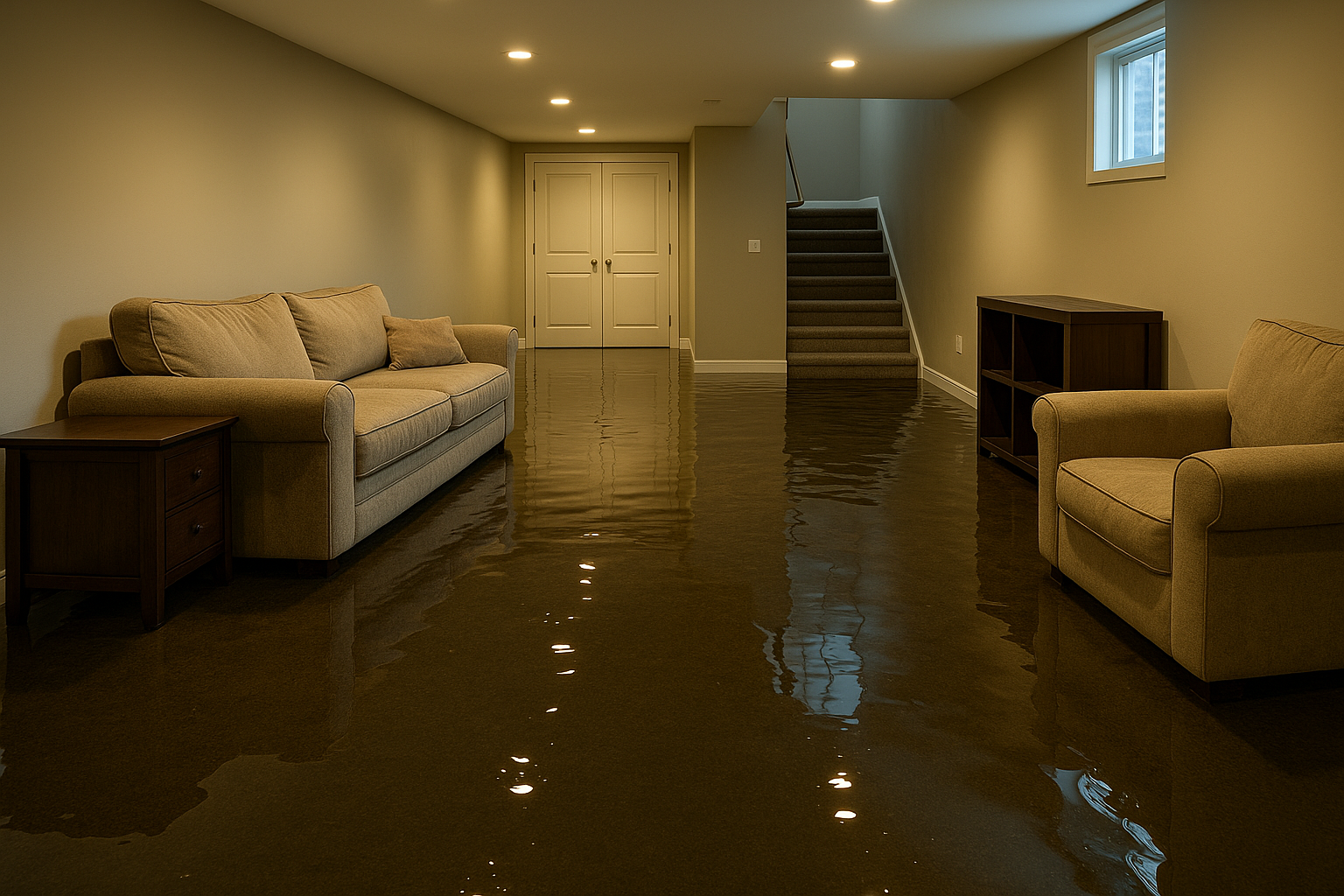
3. Foundation Cracks and Groundwater Seepage
Foundation leaks after heavy rain, basement seepage North Shore, water intrusion through foundation wall
Even small foundation cracks can let groundwater seep through during wet weather. You might notice damp spots on basement walls, musty odors, or efflorescence (white mineral deposits). Over time, repeated seepage leads to mold growth, insulation damage, and structural deterioration.
Preventive steps:
- Seal visible cracks with professional-grade epoxy or polyurethane injections.
- Ensure exterior grading directs water away.
- Add interior or exterior drain tiles with sump systems if seepage is chronic.
- Use a dehumidifier to keep humidity below 50%.
Pro Insight: Fall is “truth season” for foundation leaks. After dry summers, soil expands during October rains, pushing water through hairline cracks that weren’t visible before.
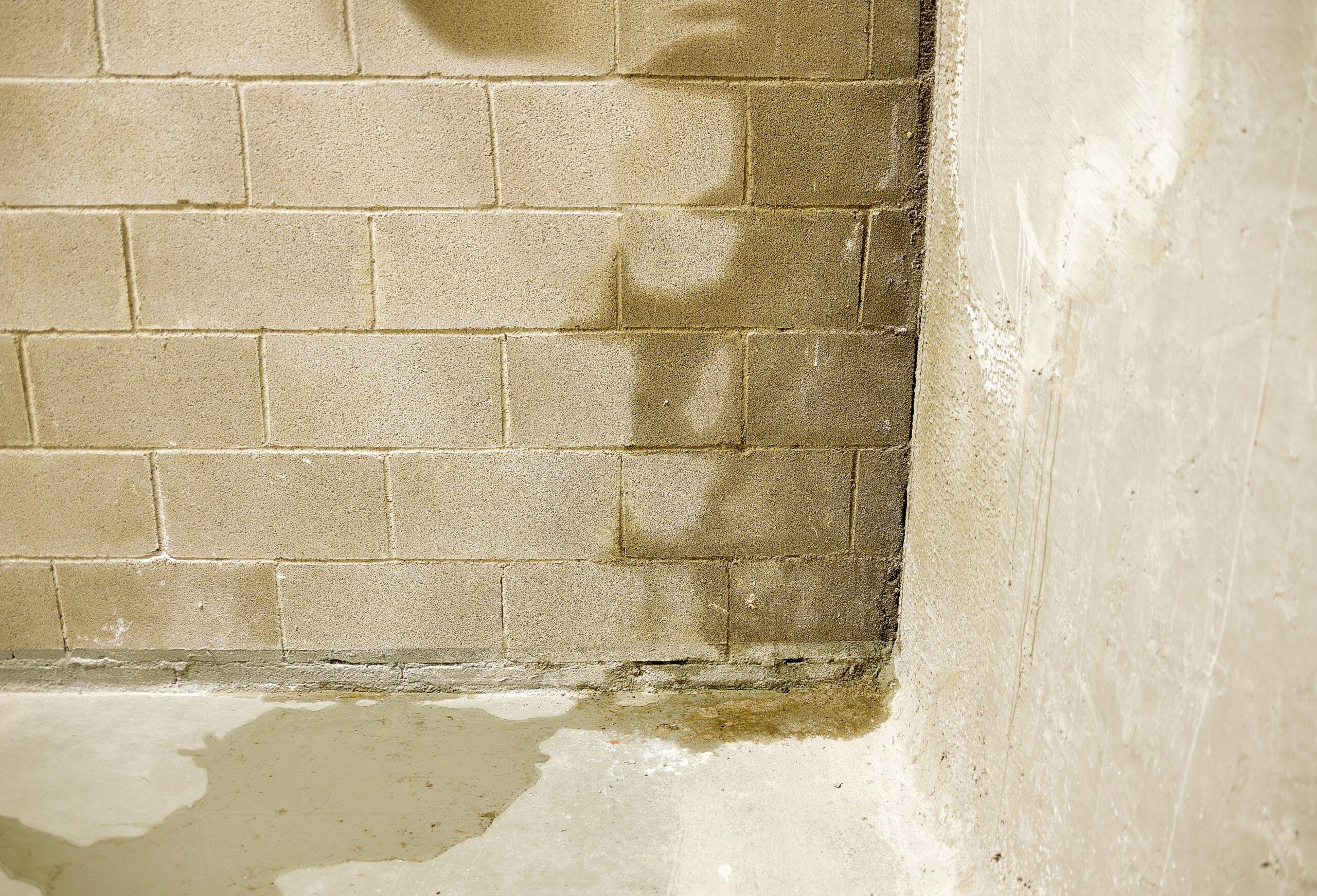
4. Frozen or Burst Pipes
Burst pipe cleanup Chicago, frozen pipe water damage repair, pipe burst restoration North Shore
When temperatures drop below freezing, uninsulated pipes—especially in crawlspaces, garages, and exterior walls—can burst. Even a small crack can release hundreds of gallons of water in hours, flooding entire levels before anyone notices.
Prevention tips:
- Insulate exposed pipes with foam sleeves.
- Keep cabinet doors open under sinks during cold snaps.
- Let faucets drip during subzero nights to relieve pressure.
- Turn off and drain outdoor spigots before winter.
If you discover a burst pipe, shut off the water supply immediately and contact a licensed plumber and a restoration specialist. The longer water sits, the greater the risk of structural damage and mold.
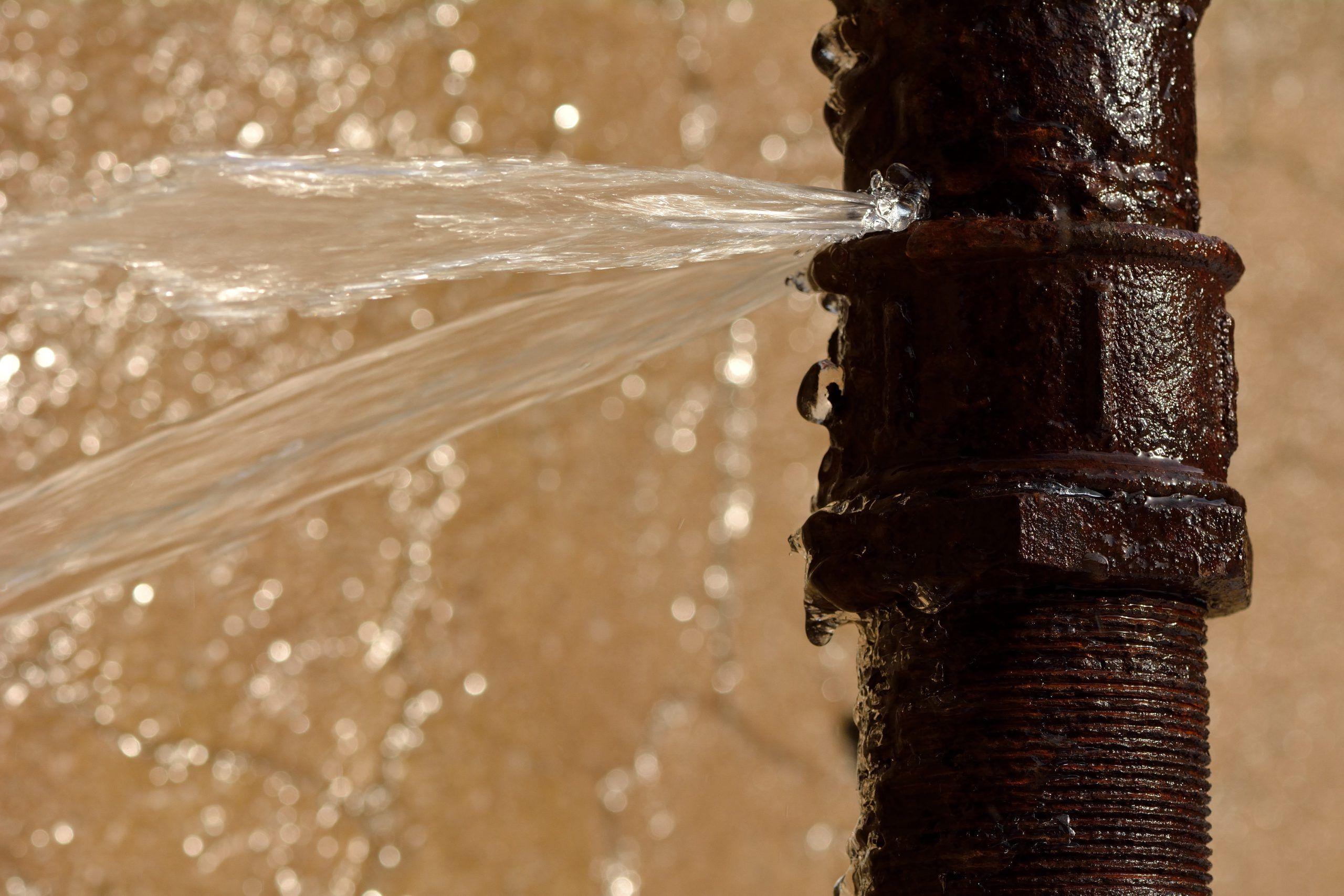
5. Roof Leaks and Gutter Overflows
Roof leak water damage Chicago, gutter overflow foundation damage, attic leak flooding prevention
Storms and clogged gutters don’t just affect your exterior—they often send water trickling down behind drywall or into attics. The result? Hidden moisture, warped insulation, and mold growth.
Signs you might be missing:
- Discolored ceiling patches or bubbling paint
- Sagging drywall around vents or light fixtures
- Musty attic smells after rain
- Ice dams forming on roof edges during winter
Prevention tips:
- Clean gutters twice a year and inspect flashing around chimneys and vents.
- Consider installing gutter guards to prevent debris buildup.
- After major storms, check your attic with a flashlight for damp insulation or dark streaks.
When roof or gutter leaks lead to interior damage, prompt drying and sanitization are key. Our team uses thermal imaging and non-invasive hygrometers to trace hidden moisture before it becomes a larger issue.
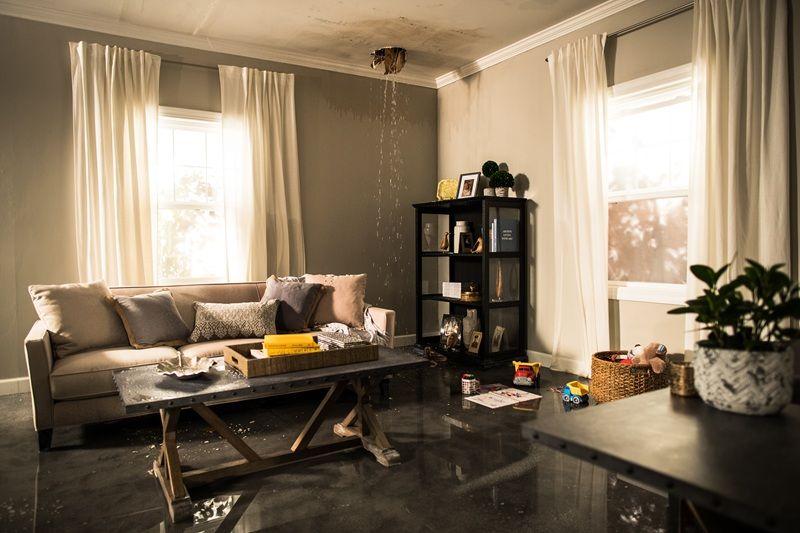
6. Appliance Leaks and Malfunctions
Washing machine leak cleanup Chicago, dishwasher flooding repair, water heater failure flood cleanup
One of the most common—and preventable—sources of flooding is a leaky appliance. A cracked washing machine hose, loose dishwasher line, or corroded water heater can release gallons of water in minutes.
Prevention tips:
- Replace washing machine hoses every 5 years with braided stainless steel.
- Check under sinks and behind appliances quarterly for moisture.
- Install smart water-leak sensors that alert your phone at the first sign of trouble.
Pro Insight: Many water heater warranties exclude flood damage from tank ruptures, so a $40 sensor or shutoff valve can save thousands.
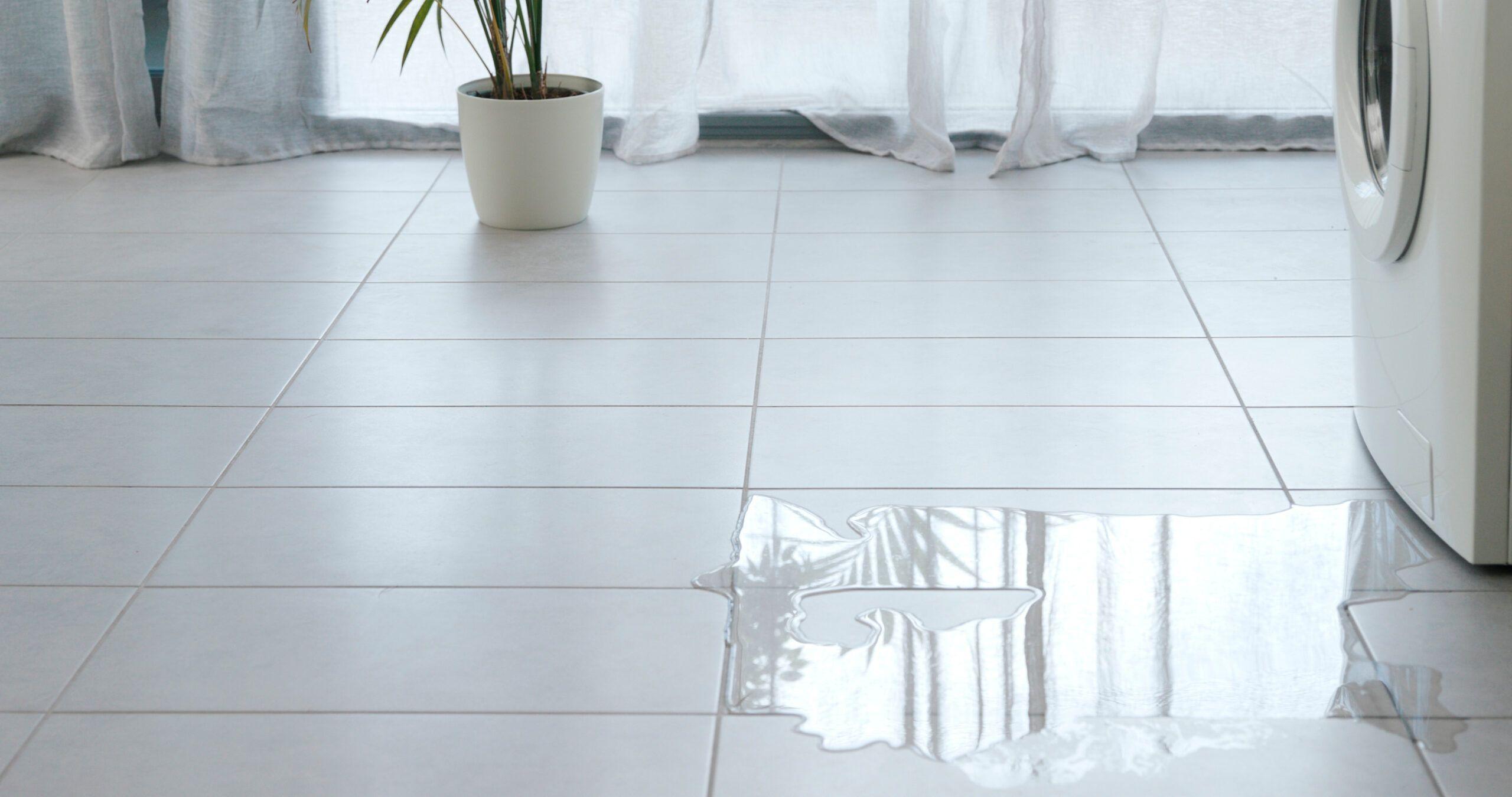
How to Handle Flood Damage Fast
When flooding happens, time is everything. Within 24–48 hours, standing water begins to warp wood, damage drywall, and invite mold growth.
Here’s what to do immediately:
- Ensure safety first. Turn off electricity in affected areas.
- Document all damage. Take photos before cleanup begins.
- Call professionals quickly. ServiceMaster Restoration By Simons responds 24/7 with industrial drying and dehumidification equipment.
- Avoid DIY demolition. Opening walls without containment can spread mold spores.
- Contact your insurance company for claim guidance—our team can help document loss and prepare restoration estimates.
What Sets ServiceMaster Restoration By Simons Apart
Founded in Chicago in 1929, ServiceMaster is America’s oldest restoration brand. Locally owned by CEO Nasutsa Mabwa and COO Sam Simon, ServiceMaster Restoration By Simons has over 40 years of regional experience serving Chicago, the North Shore, Lake County, and DuPage County.
We are:
- IICRC Certified in Water, Fire, and Mold Restoration
- Members of the Restoration Industry Association (RIA)
- 2025 Inc. 5000 Honorees
- Winners of the Chicago Star Award, BBB Torch Award for Ethics, and Stevie® Award for Business Excellence
Our mission is simple: to restore peace of mind.
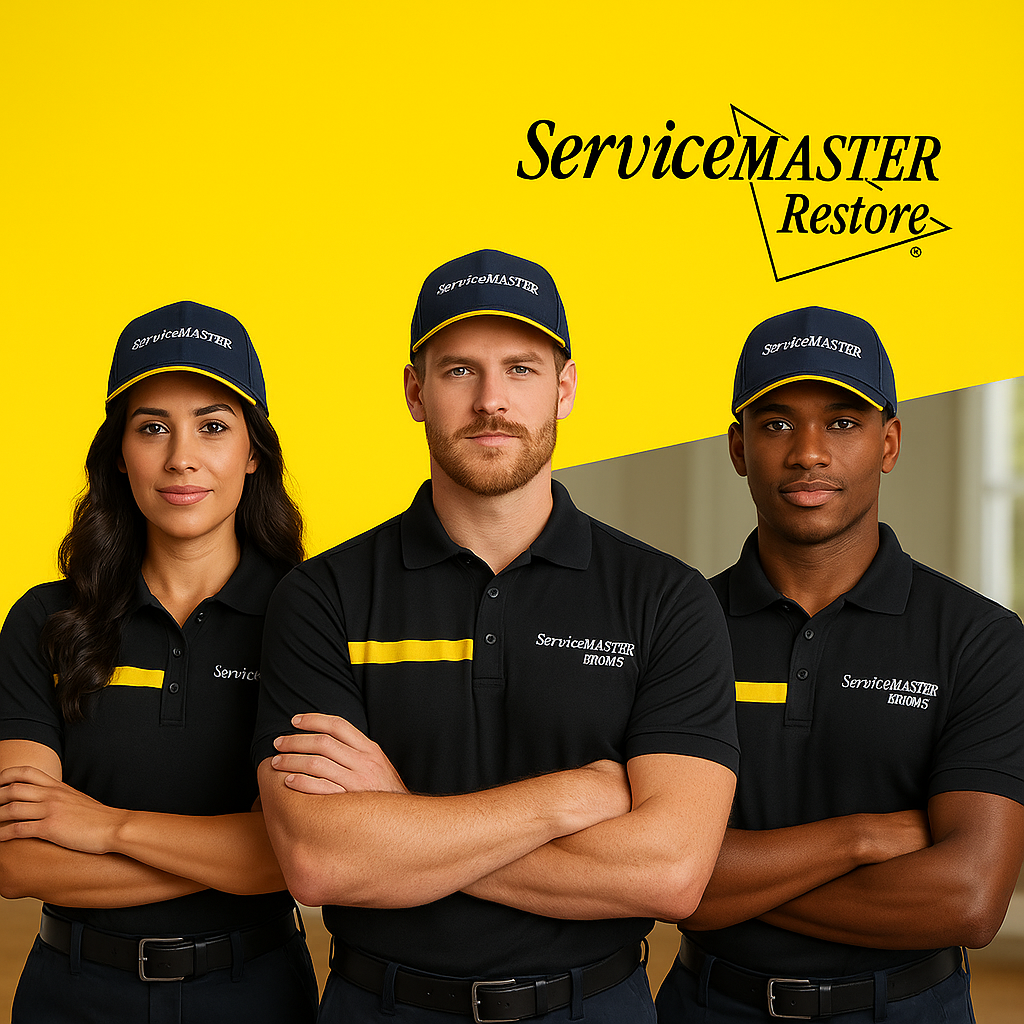
Further Reading
For a deeper dive into protecting your home, read our co-authored book,
RESTORE: A Complete Guide to Protecting Your Home As Your Most Valuable Asset.
It’s a practical homeowner’s guide to water, fire, and mold emergencies—built on decades of firsthand experience.
Related Services
- Water Damage Restoration
- Fire Damage Restoration
- Mold Remediation
- Specialty Cleaning (Textiles, Electronics, Contents)
FAQs: Flooding in Chicagoland Homes
Q1: Why does my basement flood even when it’s not raining?
Rising groundwater, sewer backups, or plumbing leaks can cause flooding even during dry spells.
Q2: Does homeowners insurance cover flood damage?
Standard policies rarely do. You’ll need a separate flood policy or sump-pump rider.
Q3: How fast can mold grow after flooding?
Within 24–48 hours. That’s why rapid drying and disinfection are critical.
Q4: Can I clean up floodwater myself?
Only if it’s minor and from a clean source (like a sink overflow). Contaminated water requires professional remediation.
Q5: What’s the best way to prevent basement flooding in Chicago?
Routine gutter cleaning, sump pump maintenance, and foundation sealing are your best defense—especially before spring thaw and fall rain.
Call the Experts Before the Next Storm Hits
If you’ve noticed damp walls, musty odors, or pooled water after rain, don’t wait.
Call ServiceMaster Restoration By Simons at (773) 376-1110 for Chicago and (847) 316-9145 for the North Shore and Lake County.
We’ll identify the source, dry the structure, and restore your home safely—because even one inch of water can cause more than a little damage.
Nasutsa Mabwa is the CEO of ServiceMaster Restoration By Simons, a nationally recognized, award-winning disaster restoration firm serving Cook, DuPage, and Lake Counties. Under her leadership, the company has become one of Chicagoland’s most trusted providers of water and flood damage restoration, fire and smoke damage cleanup, mold remediation, and specialty cleaning services for both residential and commercial clients.
A respected business and civic leader, Nasutsa has received numerous honors for her contributions to the industry and her community. Her accolades include:
- Inc. 5000 Fastest Growing Companies - 2025 recipient
- Top 100 Women to KNOW in America (2024) by KNOW Women & JPMorgan Chase
- Crain’s Chicago Business 40 Under 40
- SB100 Best of Small Business Award
- 2020 BBB Torch Award for Marketplace Ethics
- Stevie® Award for Female Entrepreneur of the Year
- 2020 Daily Herald Business Ledger C-Suite Award
- 2018 ServiceMaster® Achiever Award
She is IICRC-certified in both Water Damage Restoration (WRT) and Fire & Smoke Restoration (FSRT), combining technical expertise with visionary leadership. Nasutsa holds a Master’s in Urban Planning & Policy from the University of Illinois at Chicago and an MBA in Real Estate Development from Roosevelt University.
Beyond her business achievements, Nasutsa is an active community advocate. She is a Board Member of the Civic Federation, an Advisory Board Member, and Past President of the Executive Committee for the Evanston Chamber of Commerce. She is also a long-standing member of the Women Presidents Organization (WPO).
She is the co-author of RESTORE: A Complete Guide to Protecting Your Home As Your Most Valuable Asset, an essential guidebook for homeowners navigating the challenges of water and fire disasters.
Subscribe
Subscribe now for expert tips, rapid-response insights, and restoration guidance delivered straight to your inbox. Whether you’re recovering from fire, water, or mold damage, stay prepared with advice from the trusted pros at ServiceMaster Restoration by Simons.
Restoration and Recovery Tips
Act Fast — Protect Your Chicago Property Now
When water intrudes into your Chicago home or business, the damage begins immediately. Moisture spreads through flooring, walls, insulation, and electrical systems within minutes, and delays can lead to mold growth, structural deterioration, and costly long-term repairs.
ServiceMaster Restoration By Simons provides rapid, expert water damage restoration throughout Chicago. With 40+ years of local experience and IICRC-Certified technicians on every job, we respond quickly, stabilize the loss, and restore your property with precision and care.
Water damage won’t wait — and neither should you. Contact our Chicago team now for immediate help and a fast on-site assessment.
 (773) 376-1110
(773) 376-1110
 (773) 376-1110
(773) 376-1110







